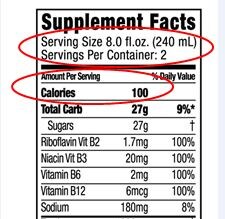
Finding yourself reaching for that mouth-watering cookie, sugary candy bar, or bag of greasy chips when cravings hit? Don’t let hunger strikes derail your diabetes meal plan. Healthy snacks can help optimize your blood glucose control, support your overall diabetes diet, provide you with a boost of energy, and help you avoid overeating. The number of snacks you eat and when you eat them depends on your diabetes management and meal plan needs. Here are 5 tips for smart snacking that you may find helpful.
1. Know How Carbs Affect You
Smart snacking begins with understanding how your body reacts to insulin and carbohydrates. It’s important to be aware of the type and amount of carbohydrates you’re eating to avoid potentially dangerous spikes or drops in blood glucose. Carbs that may cause a larger spike in blood glucose than other carbs include high glycemic-index foods such as regular soda, candy bars, and white-flour pasta and bread. Don’t forget to in your snack in your overall meal plan and bolus accordingly.
2. Plan Ahead
Resist the urge to run to the nearest vending machine or stop at the nearest fast food place. Prevent hunger strikes by preparing a healthful snack to carry with you at work, in the car, in your purse, or in your bag. Not only will preparing your healthful snacks help manage your glucose levels, you’ll also do good for your wallet and waistline. If easy-to-find snacks are too hard to resist, make them less readily available. Stock up on healthful options, such as raw almonds, hard boiled eggs, and blueberries, keep raw-cut vegetables in your fridge (you’re more likely to grab them if they’re ready to eat– try with a low-fat dip on the side), and avoid buying unhealthful snacks that are high in calories, sodium, and fat, such as chips and cookies. If there’s always food around at work, prevent mindless snacking by taking a break elsewhere or eating your prepared healthy snack.
3. Choose the Right Snacks
Look for snacks that help you achieve your targeted daily calorie and carbohydrate goals while meeting your personal taste preference. Unless you’re experiencing a low blood sugar, healthful snacks should be a combination of protein and carbs, such as an apple with peanut butter, whole grain crackers with low-fat cheese, and low-fat cottage cheese that won’t cause spikes in your blood sugar and will keep you full longer. An apple or orange, three cups of popcorn, a hard-boiled egg, or 15 almonds are just a few examples of healthful snack options.

4. Mind your Portions
Portion control is key, and without it, those light bites may end up having as many calories as a meal, wreaking havoc on your blood sugar and contributing to weight gain. Pre-packaged individual sized-snacks can help you keep portions in check, and if you purchase foods in bulk, measure out single servings using measuring cups and spoons into a baggie for individual sized portions. Be sure to check labels on pre-packaged foods, as some bags may have more than one serving size and low-fat or fat-free foods may have added sugar and salt to make up for flavor.
5. Snack Mindfully
Think before you eat. Are you actually hungry, or are you bored? Munching mindlessly out of boredom or in front of the TV is an assured way to gain unnecessary pounds and interrupt your meal plan and diabetes management goals. This doesn’t mean you can’t ever eat your favorite snacks in front of the TV. Just be sure to choose a healthy option that’s an individual serving size.
What tips do you have for smart snacking? We’d love for you to share them with us in the comments below!
